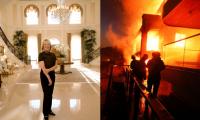Here we go again. Monsoon rains, floods, deaths and destruction. Statements from politicians and government officials responsible for prior proper planning to increase resilience and mitigate the impacts of these natural hazards. It is the same story, nay script, every year. The recent monsoon rains have so far resulted in the death of 77 people, including 39 in Balochistan alone as the provincial capital, Quetta, witnessed unprecedented urban flooding.
Minister for Climate Change Sherry Rehman termed the casualties a ‘national tragedy’. In a press conference, she also stated that the National Disaster Management Authority (NDMA) had prepared “a national contingency plan to deal with the situation during the monsoon season”. What kind of contingency plan? If there was any plan in place, why did the rains cause so much destruction at a time when people were preparing for Eidul Azha, the second most important festival in Islam? Unfortunately, human life, particularly the life of ordinary people has no value in this country. They truly are ‘children of a lesser God’.
We have been witnessing the loss of precious lives and destruction of property caused by monsoon rains for decades. There were rains and inundation where there were no NDMA and PDMAs. There were seas of overflowing water in cities despite the presence of all these high-sounding organizations and with their intimidating high officials. What has not changed is the havoc that is wreaked by Mother Nature on this poor land.
I had written in these pages about the same issue on July 11, 2017. The opening lines of the article, ‘Dealing with disaster’, were: “Carlos Flores, the former president of Honduras is reported to have expressed immense grief after his country was hit by Hurricane Mitch in 1998. He uttered these memorable and meaningful words: “we lost in 72 hours what we have taken more than 50 years to build”. This has happened to the people of Honduras only once. However, Pakistanis have faced a similar situation every year following monsoon rains.”
And I had ended my article with these words: “However, if we continue to adopt an attitude of ‘bureaucratic inertia’ towards natural disasters, we will be left with nothing but lament – just like the former Honduran president.”
And here we are again. Lamenting. Similar tall claims, hollow rhetoric and unfulfilled promises and commitments. The same old script. Climate change. Yes, climate change is a reality, but the current rains have not occurred in the winter or the spring that caught us unprepared. It is the monsoon season, and we know about the intensity of rains at this time of the year.
Has anything changed during the last five years since I penned down the above article? Or has anything improved over the years after these new institutions were set up to safeguard the people from the ravages of natural disasters? According to the Global Climate Risk Index 2021, which ranks countries based on impacts of extreme weather events both in terms of fatalities as well as economic losses, Pakistan is among the 10 most affected countries. It must be mentioned here Pakistan has been regularly ranked among the top ten most vulnerable and affected countries in the world.
As per the World Disaster Report 2003, 6,037 people have died and 8,989,631 others have been affected by natural disasters in Pakistan during the period between 1993 and 2002. This reveals the status of the human impact of natural disasters in Pakistan. Move forward to the 21st century: the same old problem with more intensity and magnitude and hence more destruction. For example, since the turn of the current century, about 120 recorded events in Pakistan have caused an estimated $22 billion worth of damages and killed 11,000 people, affecting 55 million people in the country over the past two decades.
The 2010 super floods affected over 20 million people across the country and inundated nearly one-fifth of Pakistan’s total land. The floods surpassed the physical destruction caused by previous natural disasters in Pakistan. The then UN secretary-general, Ban Ki-moon, had called the floods “the worst natural disaster” and a “slow-motion tsunami”. The catastrophe was unprecedented as over 20 million people were affected – which is more than those collectively affected by the 2004 tsunami, the October 2005 earthquake and the 2010 earthquake in Haiti.
While the overall loss of lives stood at 2,000, the destruction of property, livelihood and infrastructure was beyond imagination. The floods affected more than four million people in Khyber Pakhtunkhwa alone. The natural disaster destroyed and damaged 180,000 houses, over 466,626 acres of crops, 2,000 kilometres of roads, 80 bridges and 700 education institutions and 150 health facilities.
While we are helpless before the wrath of nature and we cannot stop the occurrence of natural disasters, we can certainly mitigate the financial and human cost of these events by taking concrete preventive measures that are prevalent elsewhere. Unfortunately, we forget these disasters and their victims as soon as flood water subsides. Flooding, unfortunately, has remained one of the most recurring catastrophes that have been affecting a large segment of the population every year. But the government’s approach towards preventative measures is always half-hearted.
One of the preliminary initiatives could be the identification of hotspots and most vulnerable rivers and canals where floods are a regular occurrence. Departments such as the NDMA/PDMA and the irrigation and forest departments should specify areas where urgent help is required. To this end, flood protection boundaries and walls are the immediate measures; this should be done on a war footing.
In the long run, all rivers and canals should have proper flood-protection boundaries. These should be properly maintained and repaired as and when required. By taking these measures, we can allay the human and financial costs of floods in future. Urban flooding has become a grave threat causing a significant loss of life and property. Do we have urban planning at all?
The writer holds a PhD from Massey University, New Zealand. He teaches at the University of Malakand. He can be reached at: muradali.uom@gmail.com
When news of reserves of gold in Balochistan came to limelight, eyes of global investors started focusing on Reko Diq
During 1980s, several police operations were conducted to curb this menace
Many rightists still admire it, appreciate its work, respect its leadership for their honesty and integrity
Each province operates independently, leading to overlapping initiatives in some areas
A common thing that happens in Pakistan is tendency for young children to go to bed very late, even on school night
Pakistan climate strategy risks being undermined by incoherent policy framework that fails to integrate climate action







